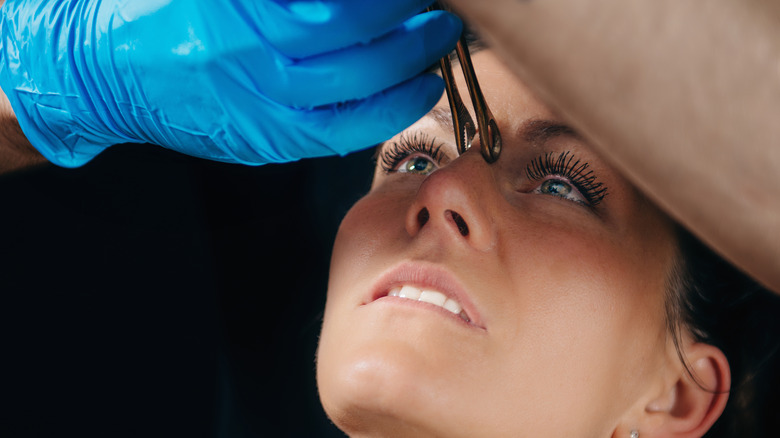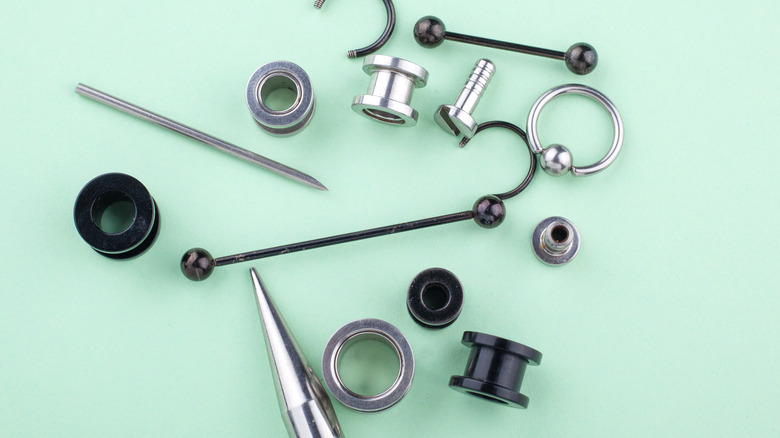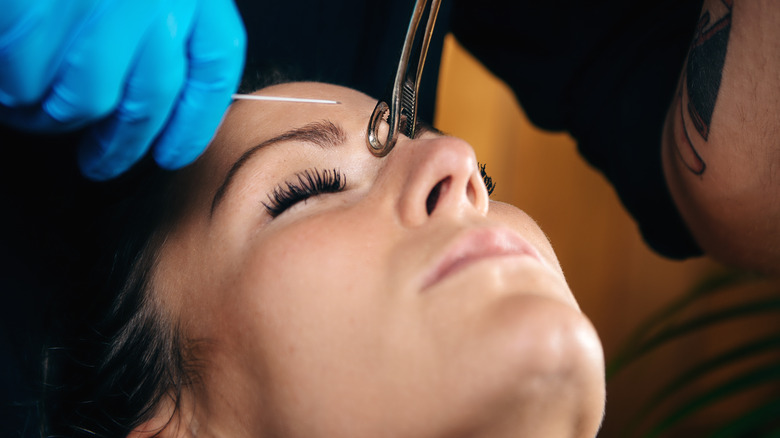The Truth About Bridge Piercings
Piercings can completely make (or break) your look. Depending on where you get it, whether it's on your ear, like a helix piercing, or on another part of your body, the perfect piercing can totally elevate your look and give you an edgy and cool vibe. However, in order to keep that vibe, you need to make sure you can commit to taking care of that piercing. Unique piercings, like the bridge piercing, are especially important to take care of and monitor.
So what do you need to know before getting a bridge piercing? When it comes down to it, you need to make sure you're aware of the piercing process and how to take care of it.
What should you expect from a bridge piercing?
A bridge piercing, also known as an Erl piercing, is technically classified as a surface piercing because it doesn't puncture cartilage, like an ear piercing does (via Bustle). The pain level is lower compared to more sensitive body parts (via Piercing Mania). You may experience some swelling or pain, but most of the pain is associated with the clamps that your piercer will use before gliding the needle through your skin.
When it comes to choosing the jewelry, Byrdie recommends choosing a curved barbell. However, if you're noticing the bars out of the corners of your eyes, you're going to need a smaller piece of jewelry.
The healing process is relatively simple — it should take somewhere between eight and 12 weeks to heal, which is far less than some cartilage piercings take, such as a conch piercing. Keep makeup, harsh cleansers, and hair products away from it while it heals, and if you're having any issues with the piercing, head back to your piercer ASAP.
What are the risks associated with bridge piercings?
Since it pierces the soft skin, there is a chance that the piercing could experience rejection or migration. Rejection happens when you place a foreign object in your body (which in this case is the piercing), and your body considers it a threat to your health (via Byrdie). Migration is what happens when the piercing moves from one spot to another, and if it goes on long enough, it can be rejected completely.
Either way, if you don't get the jewelry taken out relatively quickly once it's on the move, you could be at risk for scarring or an infection. In order to prevent this from happening, you need to make sure that the piercer you choose is experienced and well-versed in these types of piercings. They'll know exactly how much skin to pierce and how to treat any potential issues, and if your piercing does seem to be migrating, they can help you work through that as well, even if it means removing the piercing.
When in doubt, always make sure you always do your research and know what you're getting your body into when you decide to pierce your body. It's a cool piece of body art, but you need to make sure you take care of it.


